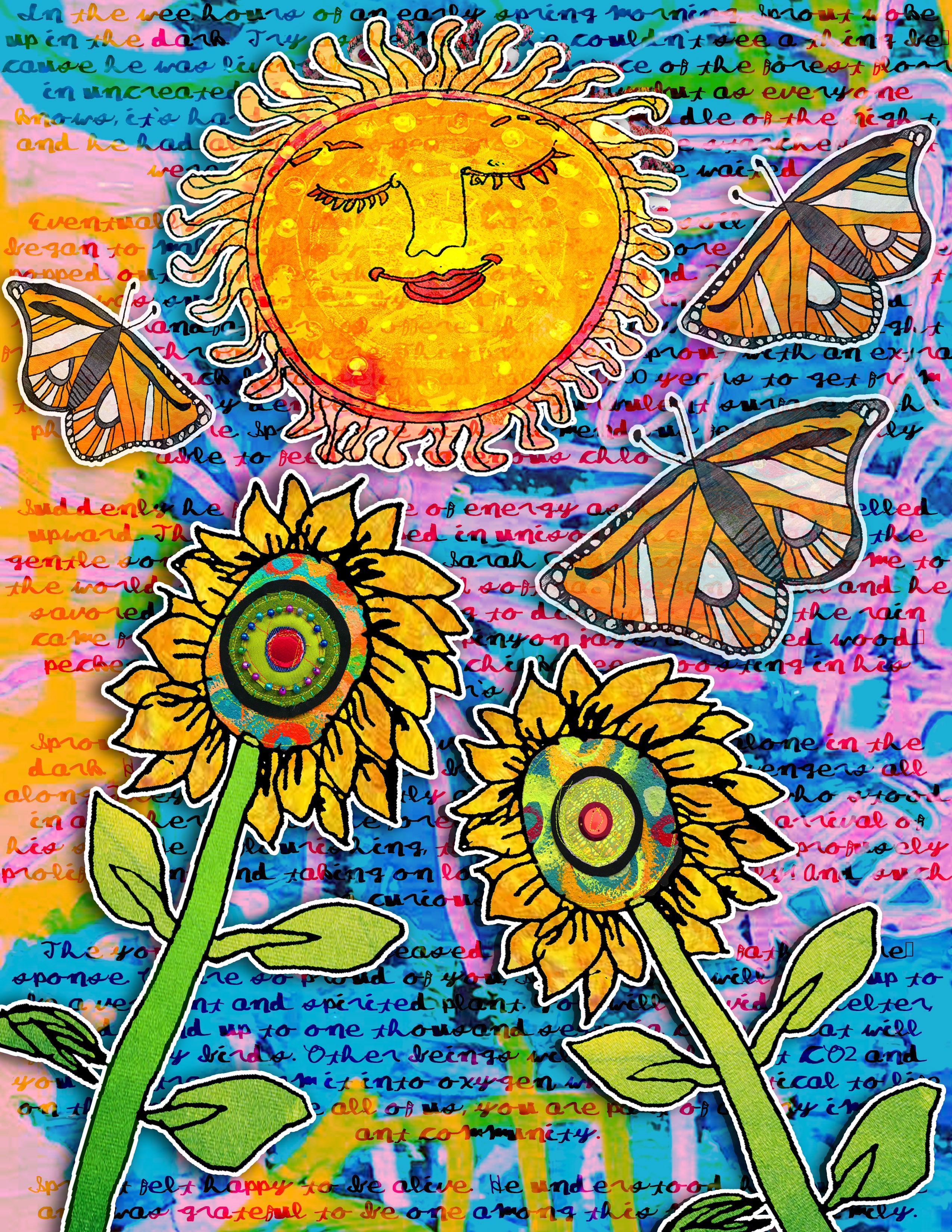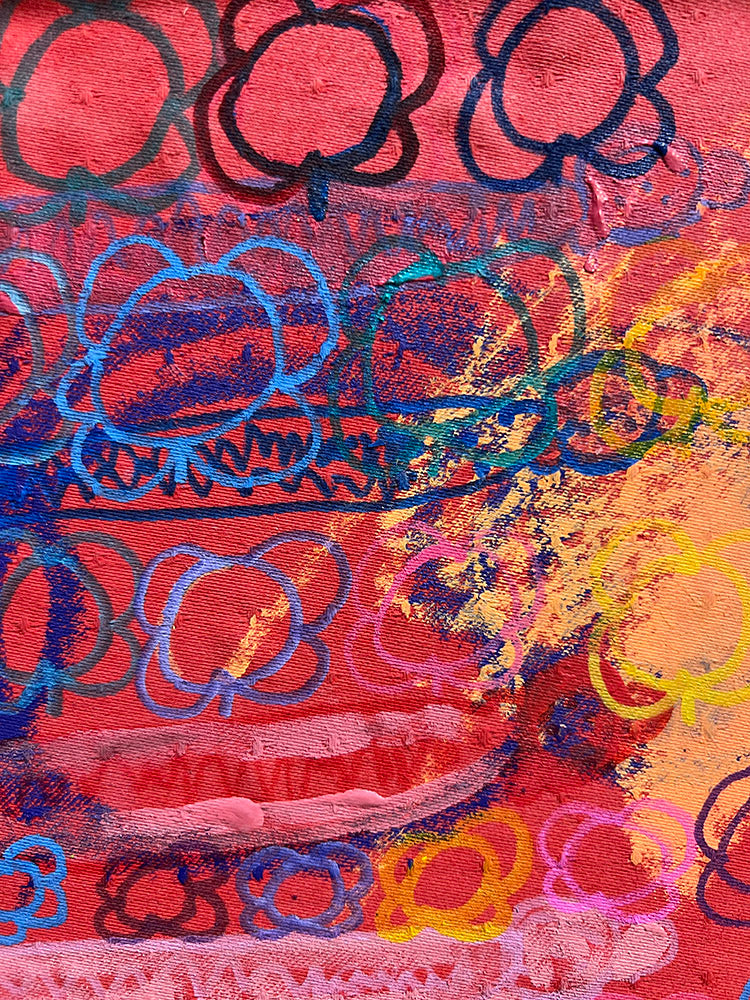The Sun
drawing by Jerry Johnson
The sun is the most direct representation of solar energy, as it is the ultimate source of energy for life on Earth. Its warmth and light provide the energy necessary for photosynthesis, enabling plants to grow and sustain ecosystems.
Monarch Butterflies
drawing by Noah Hogan
Monarch butterflies represent solar energy through its reliance on the warmth of the sun to "charge" its wings. As the butterfly absorbs the sun's heat, it activates the muscles in its wings, enabling it to fly long distances during migration. The solar energy warms its body and powers its movements, symbolizing how solar energy directly supports the butterfly's ability to travel, survive, and connect with the plants it relies on, like sunflowers. This imagery highlights the way the sun provides not just sustenance for plants, but also the energy that enables animals like the monarch to thrive and continue their life cycle.
Sunflowers
drawing by Noah Hogan
Sunflowers are iconic for their ability to capture solar energy. Their large, bright blooms and their behavior of turning to face the sun symbolize how plants harness solar energy to fuel their growth. They use sunlight to produce food through photosynthesis, demonstrating the crucial role of solar energy in sustaining plant life and, by extension, the entire food chain.
The Story of the Sprout
Made in collaboration by Noah Hogan and Deni Naffziger, font by Alexis Rhinehart
This symbolizes how solar energy sustains life on Earth, driving the natural processes that enable plants to grow, produce oxygen, and contribute to the ecosystem/community. The narrative highlights the interconnectedness of all life and the vital role of solar energy in sustaining that balance.




